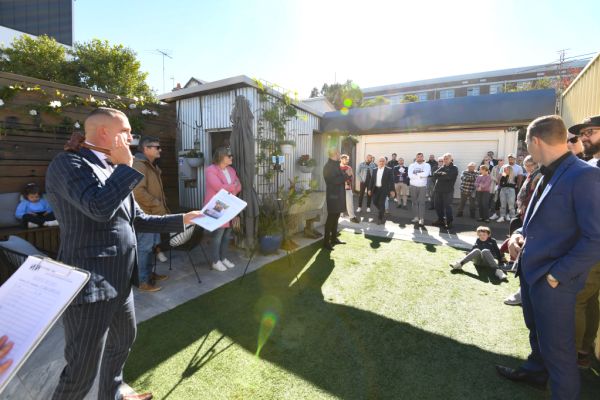 Vietnamese
Vietnamese
NSW Budget 2021: property prices expected to peak late-2021
House prices are expected to peak later this year as more sellers are encouraged to list their homes and buyers are priced out of the market, limiting house price growth, the NSW government’s economic outlook has revealed.

The property market has been booming but the NSW Budget has released its economic outlook and expects annual house price growth to peak around late-2021. Photo: Peter Rae
The news came as the NSW government posted a stronger financial position in this year’s budget thanks to the booming real estate market, which raised more than $9 billion in stamp duty revenue. This equated to more than a third of the state’s tax revenue in 2021-22.
First-home buyers drove much of that, with the budget papers showing activity by this sector of the market surged in the second half of 2020. Stamp duty concessions were up by more than a third in that period, at nearly 25,000 compared to a year earlier.
Government support measures and low interest rates contributed to the rapid rebound in the housing market, offsetting the impact of weaker population growth, the budget found.
But that is expected to reach its limit later this year. “Annual house price growth is expected to peak around late-2021,” the budget stated. “As higher prices encourage more owners to sell, this will work to limit house price growth over time. In addition, higher prices are expected to price out more potential buyers, weighing on demand.”
Credit tightening by regulators was unlikely unless investor activity gathered pace, as owner-occupiers had driven much of the house price growth, the budget said.
Stamp duty reforms
Despite stamp duty providing an unexpected boost to state revenue, the government is forging ahead with its push to phase it out and move to an annual land tax in a bid to increase homeownership, productivity and a more reliable revenue stream.
Treasurer Dominic Perrottet was not shying away from his commitment to multi-decade reform on how tax is collected on property transactions, although it was still unclear when it would begin to be implemented.
Mr Perrottet said housing affordability was the “biggest challenge facing our government and our state for a generation” and that the government had laid the foundations to help rectify the problem.
Changing stamp duty was an opportunity to boost productivity in NSW: “Providing the right types of housing, in the right places, at the right times, can make a big difference to labour mobility, productivity and cost of living pressures,” the budget stated.
In the long run, the changes are expected to increase home-ownership by about 6 per cent and a reduction in property prices in the order of 3 to 4 per cent, according to a government progress report released in June.
The changes would see residential homeowners paying an annual fixed fee of $400, and $1500 for investors.
When in place, stamp duty exemptions and concessions would be replaced with a $25,000 first-home-buyer grant.
The construction and renovation boom
Meanwhile, residential construction for new houses and renovations was expected to remain strong in the short term due to higher house prices, the federal government’s HomeBuilder policy and low interest rates.
NSW households have lodged more than 23,000 applications for the grants scheme, of which more than 16,000 were for new homes. That was equivalent to about 32 per cent of all building approvals in 2019.
Building approvals issued by local councils spiked by the end of 2020 and the start of 2021, with approvals in April nearly 60 per cent above the average month in 2019.
The state government also said it believed the pipeline of work was much larger than expected due to the extension of the HomeBuilder commencement deadline to 18 months.
This would push out more residential construction into 2022 and continue to offset any economic impact.
But that meant building approvals were running “well ahead of the change in population”, which could mean there might be a potential oversupply in 2022, the budget stated.
The demand for renovations was also expected to drop off by next year as any extra money would be spent back on international travel once borders reopened.
“Once the temporary boost to housing construction and renovation activity from HomeBuilder fades, housing activity is expected to ease,” the budget stated.
“Higher interest rates anticipated for 2024 as the Reserve Bank of Australia tightens monetary policy will accentuate the weakness in demand for housing construction.”
The budget also completed economic modelling based on the scenario that working from home was here to stay.
By TAWAR RAZAGHI

